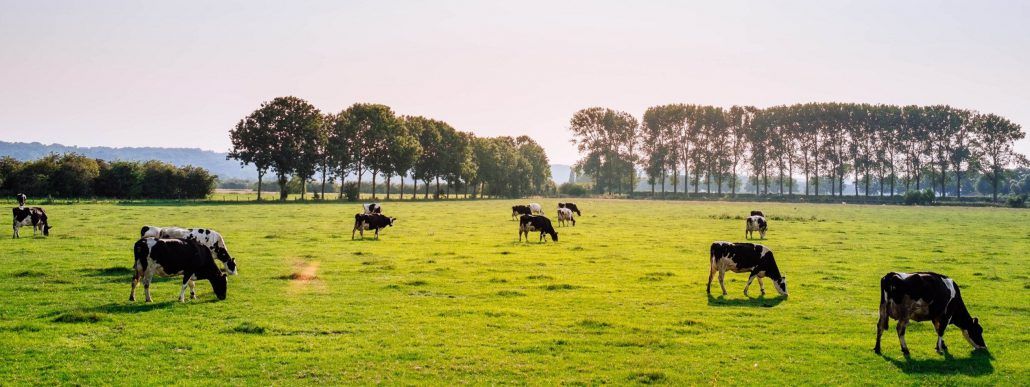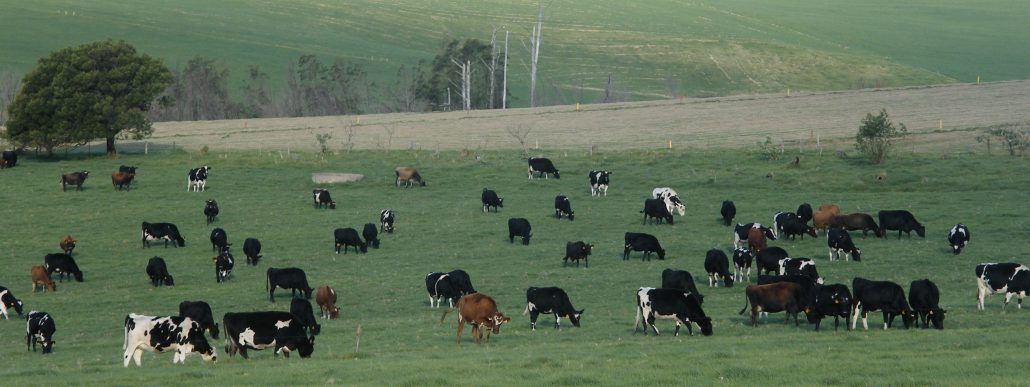There are very different types of dairy farm systems. There are those where the cows spend all of their time in a shed or single camp and all of their food is brought to them. Such a system has many advantages and disadvantages, but I will not get into it, as these are not the types of farms which we work on. The farms we work on are pasture-based systems. On these farms grass is the main asset. Farmers grow large amounts of grass on pastures, which the cows then eat in order to produce milk. Concentrated feeds, which are high in energy and minerals that the cows need, as well as other forms of roughage (feed that is high in fibre, such as silage, straw and lucerne), are used to keep the cows well fed where necessary. The percentage of feed that comes from the pastures varies from farm to farm, but we encourage farmers to make maximum use of the feed that they grow on their farms, as this is their greatest asset with which to create a sustainable production system.
On pasture-based dairy farms, farmers try to imitate the way that nature works. The cows are used to graze the grass in a way that large herds of game (think Wildebeest in the Serengeti) move through an area, eating everything available and then moving on so that the grass can rest and grow again. Farmers put a lot of effort and time into making sure that they give the cows the correct amount of grass each morning and evening (the cows are moved twice a day), so that they are never hungry, but also so that they eat all of the available grass without wasting any. This process of grazing, when done correctly, helps the roots of the grass to grow well, because they are given enough time to rest between each grazing. The process of these roots growing, because of photosynthesis, continuously removes carbon dioxide (a greenhouse gas) from the atmosphere and stores it in the soil (for more on this read: Cows might actually be part of the solution). People cannot eat grass, therefore, in order to get food from it we need animals to convert it into food that people can eat (for more on this read: A cow’s rumen is a wonderful thing).
A well-managed pasture-based dairy farm should aim to rely on minimal external inputs (supplementary feed, concentrated feed and fertiliser). These external inputs are most often associated with higher environmental impacts (carbon footprint, water use, etc.) and cost farmers a lot of money. They are also subject to price fluctuations, which are a big issue for farmers. Managing a dairy farm is a complex challenge, but farmers that apply the correct principles, emulate nature as well as possible and make most effective use of their main asset (the grass they grow) are able to produce milk while achieving sustainability goals.
- A carbon footprint assessment for pasture-based dairy farming systems in South Africa - 2024-02-07
- What progress have farms participating with Trace & Save made over the past 10 years? - 2023-09-06
- Carbon footprint reduction over time: Lessons from pasture-based dairy farms in South Africa - 2023-09-04


